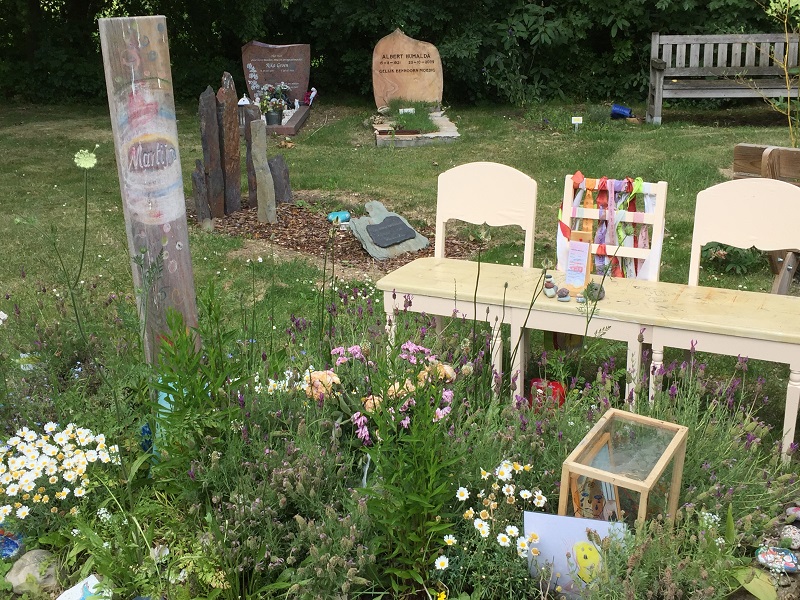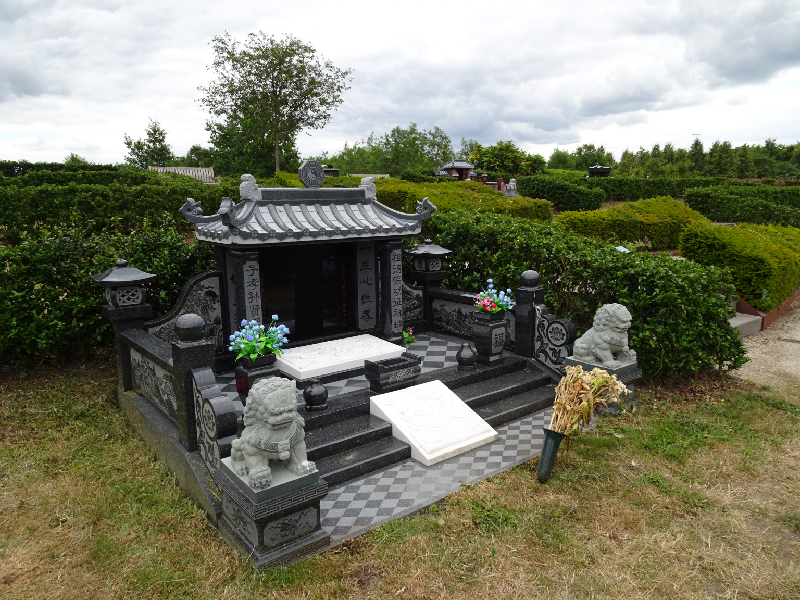This blog by Katie McClymont from the University of the West of England looks at the role of cemeteries and crematoria as public spaces of belonging in Europe. It's part of the RTPI's Planning Research Matters series showcasing exceptional research from RTPI accredited planning schools.
Cemeteries are not usually the primary topic of daily work in planning practice. Many reading this may well be wondering why the RTPI has been a partner in two research projects about the needs and desires of minority faith and migrant groups regarding death and memorialisation, first in the England and Wales, then across Northern Europe more widely. Hopefully this short blog will not only convince readers otherwise, but inspire you to find out more about our research and consider these issues more in your own practice.

A free field in the Netherlands with no restrictions on memorisation
Cemeteries, in their different forms, are a common land use across Europe and they hold important social, cultural, emotional, spiritual and environmental values. They therefore are important aspects of neighbourhoods and communities, and have a role in promoting biodiversity, well-being and climate change mitigations. This is on top of their role as a space that needs to serve the personal, cultural and faith needs of ever-diversifying populations. Balancing these different aspects of cemetery space needs to be done sensitively. In this blog, I will draw on some insights from these recent RTPI supported projects, as well as other research that has engaged with the topic more generally, hopefully providing some practical ways to address these issues.
Cemeteries and crematoria can be inclusive and flourishing community spaces, places which demonstrate the history and diversity of an area, and places where all can be welcomed. Providing sections and spaces where groups can practice their memorial and funerary rituals can be really beneficial to them. The Chinese Feng Shui space in Zwolle cemetery in the Netherlands is an interesting case (see our project blog post about this for more details).

The Chinese Feng Shui space in Zwolle cemetery in the Netherlands (Credit Dr Mariske Westendorp)
Examples like this should inspire planners to engage with these issues, rather than seeing this as something to be fearful about. Community consultation, as planners know, is an important first step in any project. Conversations about how to manage divergent needs and respect the constrains of a context can lead to fruitful conversations and outcomes such as this. For groups and individuals who favour cremation and ash scattering onto flowing water, including many Hindus and Sikhs, adequate facilities be created to accommodate this. Although this is beyond the scope of ‘planning for cemeteries’, it is an important part of being aware of the wide landscape of multifaith bereavement and ritual practice happening in the UK and Europe. This example from Cardiff marks good practice, and the end of a long negotiation.
To achieve positive outcomes, planners need to balance these potentially competing requirements on space as with any other type of development, but moreover and alongside, we need to go back to one of the core tenets of planning practice: public involvement. We need planners and planning to seek the views of people about the suitable balance of activities in existing cemeteries and requirements for new ones. Dialogue needs to be developed between cemetery and crematoria providers and operators locally, this often but not always or only being the local authority, and planners, as well as between faith and community groups, but whilst so doing acknowledging ‘diversity within diversity’: there is not an ‘off the shelf’ way of providing cemetery space for a person of a given faith. Traditions vary, as do people and families and by developing our vocabularies and understandings, cemeteries can remain important public and deeply personal spaces.
More practically, it is important that the right infrastructure is provided at cemeteries. Issues such as adequate parking and access via public transport matter as much in cemeteries as they do for other community facilities. It is important that planning provides for all users, including those who may attract large congregations, thinking about how space could be used flexibly to accommodate greater numbers at certain times. This was something that came up across the case studies in our earlier research in England and Wales.
Research I have been part of outside of this project has highlighted some of the benefits of cemeteries as ‘green infrastructure’. Maintaining cemetery space as accessible, tranquil and biodiversity-supporting places can be compatible with making inclusive, multifaith spaces, but again, two things familiar to all RTPI members are necessary here- good planning and thoughtful consultation. This is at the level of an individual site and a wider city/area. The first raises questions such as is there clear signage, are there places for people to sit, are there clear route through for causal walkers/leisure users which do not infringe on areas dedicated to certain faiths who would not want, for example, dogs present in that section, are users and local people involved and informed about decision making in this place. The second looks to how cemeteries play a part in broader networks of green infrastructure, and how they respond to and understand the changing demographics in their area.
For planning and planners to pro-actively think about these sorts of issues and facilities demonstrates that the needs of minority faith groups are no longer seen as ‘add-ons’, but crucial human requirements; markers of good, inclusive places.



